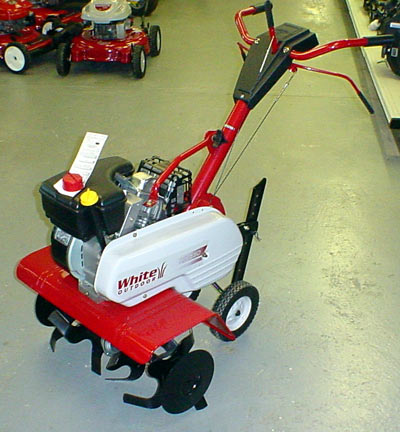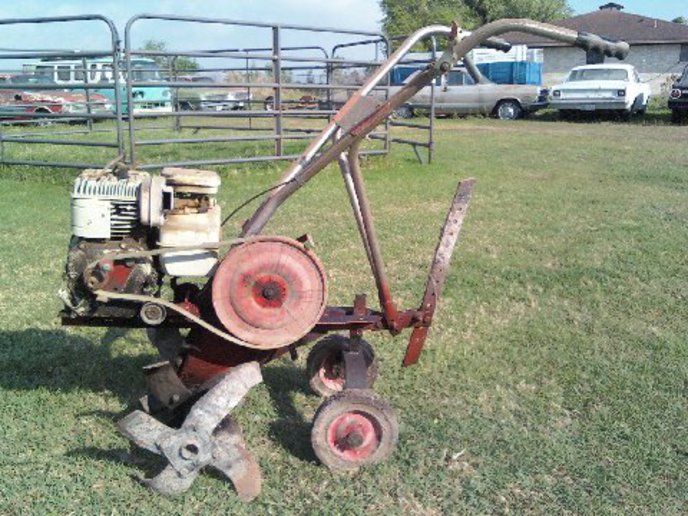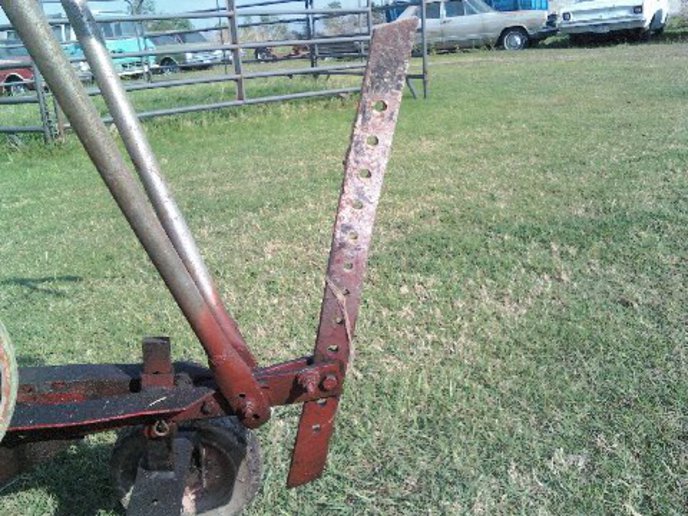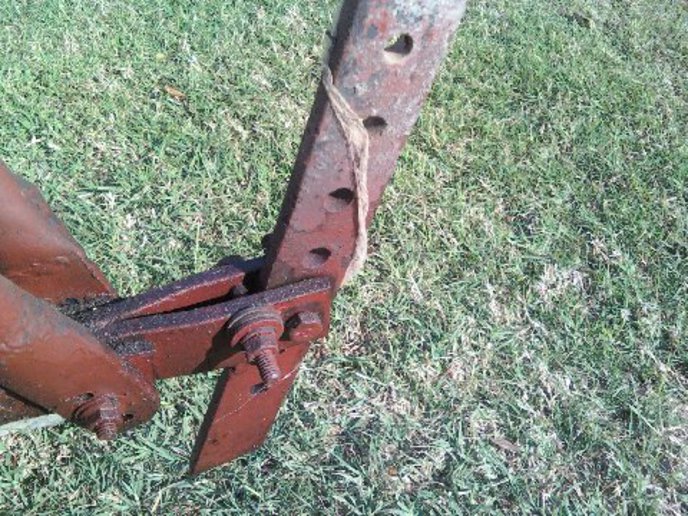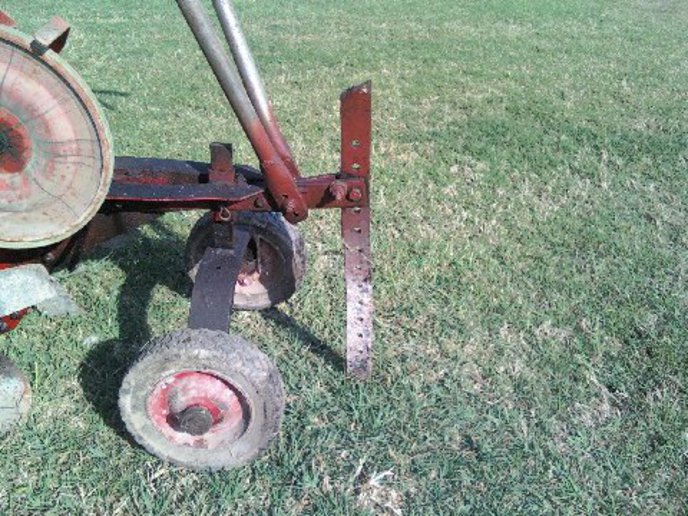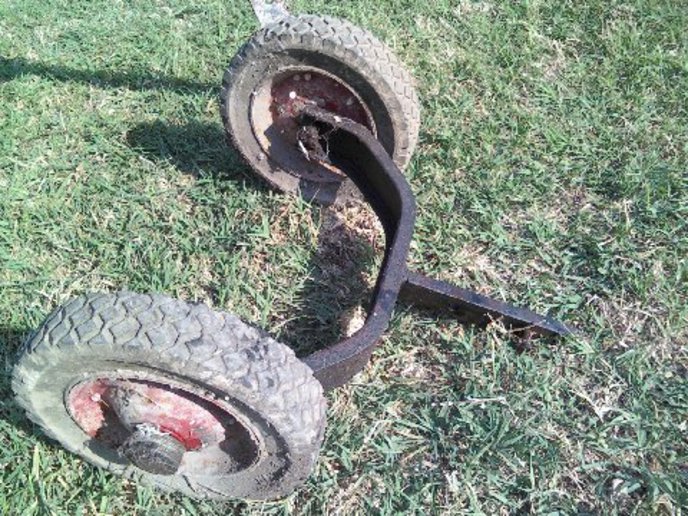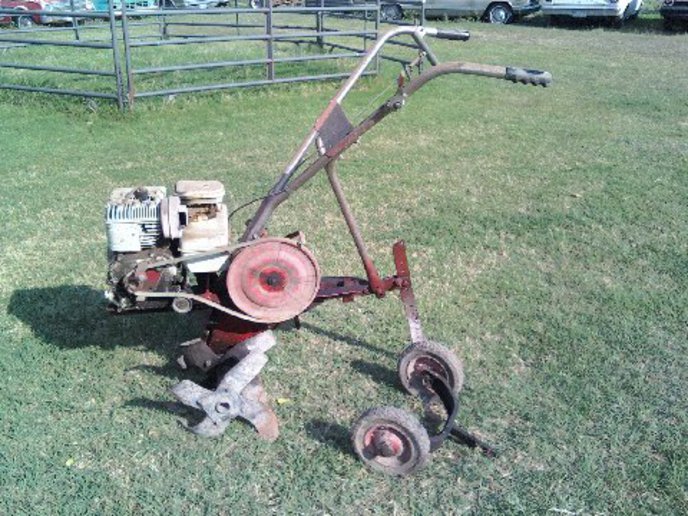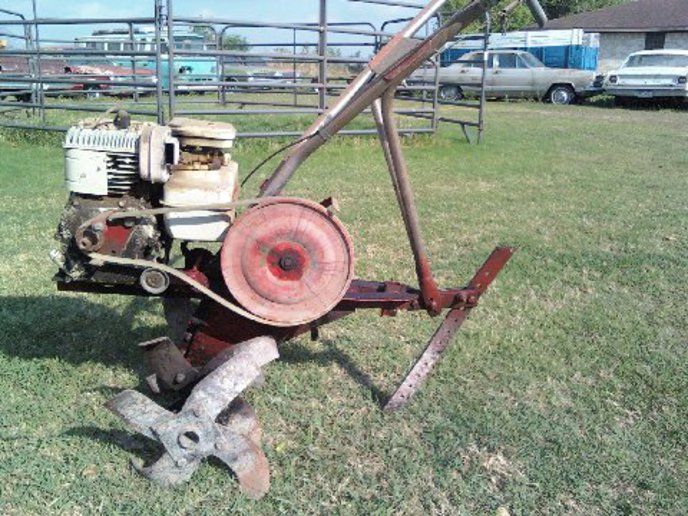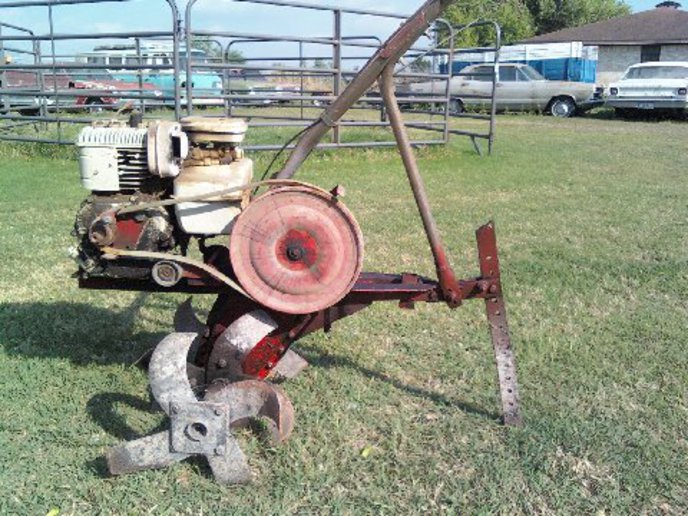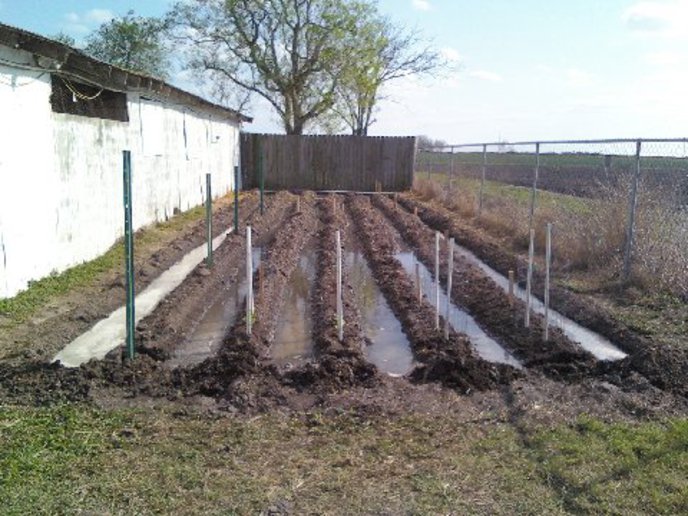Hi, Started roto tilling for the garden but I'm not sure how to adjust it so I don't have to hold it back when it jumps around breaking sod. It's an old style front tine tiller.
It has a yoke in the back with 2 or 3 adjustment holes held by one bolt. It swivels up and down as it only has one bolt which also holds the handle bar brackets.
The back of the yoke has a hole for a long piece of flat bar with angled ends and plenty of adjustment holes. I think that is how it is supposed to hold the tiller down but since the yoke swivels it doesn't do it.
The wheels are also adjustable up and down but are on the lowest setting.
Thanks for any help on how to set it so it is easier to use.
It has a yoke in the back with 2 or 3 adjustment holes held by one bolt. It swivels up and down as it only has one bolt which also holds the handle bar brackets.
The back of the yoke has a hole for a long piece of flat bar with angled ends and plenty of adjustment holes. I think that is how it is supposed to hold the tiller down but since the yoke swivels it doesn't do it.
The wheels are also adjustable up and down but are on the lowest setting.
Thanks for any help on how to set it so it is easier to use.


